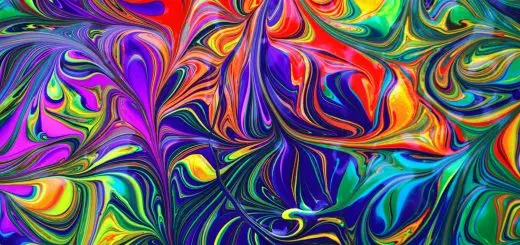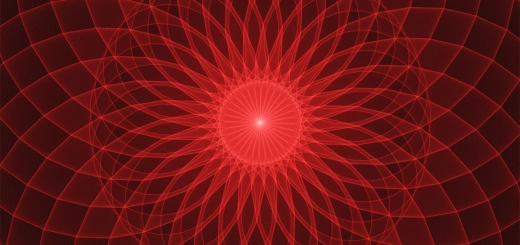Color Psychology: Emotional Connections

Looking for more amazing products? Check out our online store and explore our collection here! Happy shopping!
Before diving in, please note: This post is for informational purposes only. If you’d like to know more about how we approach topics, feel free to check out our friendly Disclaimer Page.
Hey there, amazing readers! 
We’re committed to delivering quality posts, and your support (even just sticking around despite the ads) means everything to us. So, bear with us, and thanks for helping us keep the good vibes rolling. Now, on to the fun stuff!
TRANSLATE BUTTON AT THE END OF THE ARTICLE
A Quick Overview
Color psychology is a fascinating field that explores the impact of different colors on human emotions and behaviors.
It delves into how colors can evoke specific feelings and influence our mood, decisions, and perceptions.
Understanding the emotional connections of colors can be beneficial in various aspects of life, from interior design and branding to marketing and therapy.
By harnessing the power of color psychology, individuals and businesses can create desired atmospheres, evoke specific emotions, and even promote healing.
In this article, we will explore the intricate relationship between colors and emotions, the cultural variations in color associations, the psychology behind color preferences, and practical tips for using colors to influence emotions.
Understanding Color Psychology: Emotional Connections
Color psychology is the study of how different colors can affect human emotions, behaviors, and perceptions.
It examines the psychological impact of colors on individuals and how they can evoke specific feelings or reactions.
Colors have the power to communicate messages, create moods, and influence our subconscious mind.
Understanding the emotional connections of colors can help us make informed decisions in various aspects of our lives, such as the colors we choose to surround ourselves with, the colors we wear, or the colors we use in our marketing materials.
The Influence of Color on Emotions
Colors have a profound influence on our emotions and can affect our mood in different ways.
For example, warm colors like red, orange, and yellow are often associated with energy, passion, and excitement, while cool colors like blue, green, and purple are linked to calmness, relaxation, and tranquility.
The brightness, saturation, and hue of a color can also impact how we feel.
Bright, vibrant colors may evoke feelings of happiness and vitality, while muted, desaturated colors may create a sense of calmness and introspection.
How Different Colors Evoke Specific Feelings
Each color has its own unique psychological associations and can evoke specific feelings or emotions.
Here are some common color associations:
Red: Passion, energy, excitement, and intensity.
Blue: Calmness, serenity, trust, and stability.
Yellow: Happiness, optimism, warmth, and creativity.
Green: Growth, harmony, nature, and balance.
Purple: Royalty, luxury, creativity, and spirituality.
Orange: Energy, enthusiasm, warmth, and vitality.
Cultural Variations in Color Associations
Color associations can vary across different cultures and societies.
While some colors may have universal meanings, others can have different interpretations based on cultural contexts.
For example, in Western cultures, white is often associated with purity and innocence, while in some Eastern cultures, it may symbolize death or mourning.
Understanding cultural variations in color associations is essential when using colors in a global context or when targeting specific cultural groups in marketing or design.
Impact of Color Choices on Mood
Our color choices can have a significant impact on our mood and emotional well-being.
Surrounding ourselves with colors that resonate with us can create a sense of comfort, happiness, and positivity.
On the other hand, being exposed to colors that we dislike or find jarring can lead to feelings of discomfort, irritability, or even anxiety.
By being mindful of the colors we choose in our environment, we can create a harmonious and uplifting space that supports our emotional health and overall well-being.
The Psychology Behind Color Preferences
Our color preferences are often influenced by a combination of personal experiences, cultural influences, and psychological factors.
Some colors may evoke positive memories or associations, while others may trigger negative emotions or memories.
Personal preferences for certain colors can also be influenced by personality traits, mood, or current emotional state.
Understanding the psychology behind color preferences can help us make intentional choices in our daily lives, whether it’s selecting clothing, decorating our homes, or designing products.
Using Colors to Create a Desired Atmosphere
Colors play a crucial role in shaping the atmosphere of a space and can influence how people feel and behave within that environment.
By strategically choosing colors based on their emotional associations, individuals can create desired atmospheres that align with their goals or intentions.
For example, using calming colors like blue and green in a bedroom can promote relaxation and better sleep, while incorporating vibrant colors like red and orange in a workspace can boost energy and creativity.
Understanding how colors interact with each other and impact our emotions is key to creating a harmonious and inviting atmosphere.
Color Combinations and Their Effects
Color combinations can also have a significant impact on our emotions and perceptions.
Certain color combinations can create visual harmony and balance, while others may clash or create tension.
Understanding the principles of color theory, such as complementary, analogous, or monochromatic color schemes, can help us create visually appealing and emotionally engaging designs.
By experimenting with different color combinations and understanding how they interact, we can evoke specific feelings or moods in our surroundings.
Applying Color Psychology in Design
In design, color psychology plays a crucial role in creating visually appealing and effective communication.
Whether it’s designing a logo, website, packaging, or advertisement, color choices can influence how people perceive and interact with a design.
By understanding the emotional connections of colors and their impact on human behavior, designers can create compelling visuals that resonate with the target audience.
Using colors strategically to evoke specific emotions or convey a brand’s personality can enhance the overall effectiveness and memorability of a design.
Harnessing the Power of Color in Marketing
Color psychology is widely used in marketing to influence consumer behavior, create brand recognition, and evoke desired emotions in target audiences.
Marketers carefully select colors for branding, packaging, advertisements, and product design to convey specific messages or associations.
For example, fast-food chains often use red and yellow colors to stimulate appetite and convey a sense of urgency, while luxury brands may use black and gold to signify exclusivity and sophistication.
By harnessing the power of color in marketing strategies, businesses can create strong emotional connections with consumers and drive purchasing decisions.
Color Therapy: Healing Through Colors
Color therapy, also known as chromotherapy, is a holistic healing practice that uses colors to promote physical, emotional, and spiritual well-being.
Different colors are believed to have specific healing properties and can be used to balance energy centers in the body, known as chakras.
For example, blue is often used to promote relaxation and reduce anxiety, while yellow is associated with boosting confidence and creativity.
Color therapy can be applied through colored lights, visualizations, or wearing specific colored clothing to restore harmony and balance in the mind, body, and spirit.
Practical Tips for Using Color to Influence Emotions
Here are some practical tips for using color to influence emotions in various aspects of life:
Choose calming colors like blue and green for relaxation areas, such as bedrooms or meditation spaces.
Use energizing colors like yellow and orange in workspaces to boost creativity and productivity.
Consider the cultural associations of colors when designing international marketing campaigns or products.
Experiment with different color combinations to create visually appealing and emotionally engaging designs.
Incorporate colors that resonate with your target audience to evoke specific emotions or associations in branding and marketing materials.
Conclusion
Color psychology offers valuable insights into the emotional connections of colors and how they can influence our mood, behaviors, and perceptions.
By understanding the impact of different colors on our emotions, we can make informed decisions in design, marketing, therapy, and everyday life.
Whether it’s creating a calming atmosphere in a space, designing visually appealing graphics, or using colors strategically in marketing campaigns, harnessing the power of color psychology can help us create meaningful and impactful experiences that resonate with others on a deeper level.
Remember, the colors we choose can have a profound effect on how we feel and interact with the world around us, so choose wisely and be mindful of the emotional connections of colors in your environment.

The Enlightenment Journey is a remarkable collection of writings authored by a distinguished group of experts in the fields of spirituality, new age, and esoteric knowledge.
This anthology features a diverse assembly of well-experienced authors who bring their profound insights and credible perspectives to the forefront.
Each contributor possesses a wealth of knowledge and wisdom, making them authorities in their respective domains.
Together, they offer readers a transformative journey into the realms of spiritual growth, self-discovery, and esoteric enlightenment.
The Enlightenment Journey is a testament to the collective expertise of these luminaries, providing readers with a rich tapestry of ideas and information to illuminate their spiritual path.
Our Diverse Expertise
While our primary focus is on spirituality and esotericism, we are equally passionate about exploring a wide range of other topics and niches 

To ensure we provide the most accurate and valuable insights, we collaborate with trusted experts in their respective domains 
Our blog originally focused on spirituality and metaphysics, but we’ve since expanded to cover a wide range of niches. Don’t worry—we continue to publish a lot of articles on spirituality! Frequently visit our blog to explore our diverse content and stay tuned for more insightful reads.
Hey there, amazing reader! 
Check out our store here and take a peek at some of our featured products below! Thanks for being awesome!













